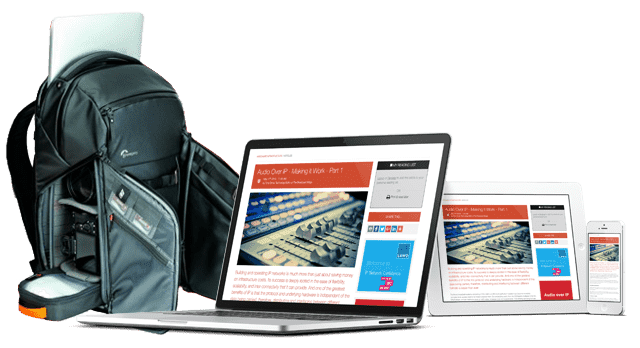Live Sports Production: Part 4 – Camera & Audio Systems

Welcome to Part 4 of ‘Live Sports Production’ - This multi-part series uses a round table style format to explore the technology of live sports production with some of the industry’s leading broadcast engineers. It is a fascinating insight into what is being done every day around the world.
Part 4, delivered here, moves on to discuss the array of specialist cameras required for many sports along with the systems required to support them. It also delves into the world of audio, looking at the modern Audio Control Room in the context of distributed production models and how microphone selection and the skills of an expert audio engineer remain the foundations of the fine art of audio acquisition.
In Parts 1 & 2 of this content collection we discussed the big picture questions of where we are in the evolutionary cycle of live sports production. Our panel discussed some key themes; the rise of remote production techniques and the balance of Full OB, Full Remote, REMCO and Hybrid production models in use. We discussed how IP has not entirely eclipsed SDI, but joined it in a hybrid networking ecosystem. We looked at the ongoing transition from dedicated hardware processing towards flexible COTS compute resource running a software ecosystem. We examined the evolution of the Broadcast Controller as the central command and control interface of the modern broadcast ecosystem. Our discussion featured contribution from participants at Broadcast Solutions, Diversified and NEP.
Part 3 of this series digs into some of the detail of how these production techniques are achieved, and the practicalities of deploying the technology required within the various production models. It asks a series of key questions; What are the differences in technology required at the venue across the different production models? What new OB vehicle designs are emerging to support it? Has on-site connectivity between the camera and the truck changed with the arrival of IP & how do the different models impact backhaul encoding? How do the various production models impact latency and the flow of monitoring and comms?
Live Sports Production published in four parts. Details of all four parts can be found HERE.
About Part 4 – Camera & Audio Systems
Article 1 : Specialist Camera Systems
We explore the incredible diversity and quantity of camera technology deployed at global sporting events and the systems required to manage them.
Article 2 : How A Regional Motorsport Rig Became a Scalable Production Model
Our partner Blackmagic Design share the story of how Leni Event Tech developed their new OB vehicle to achieve ambitious production standards with Blackmagic technology.
Article 3 : Audio Control Room Systems
Asking what’s in an audio control room (ACR) these days is more of a philosophical question than it is a practical one. What exactly does the ACR look like in a modern broadcast environment? More fundamentally, where on earth is it and how is it accessed?
Article 4 : Making The Step To Wideband With Spectera
Is Sennheiser’s Spectera bidirectional wideband digital wireless ecosystem really transforming wireless pro audio and what benefits does it bring for sports broadcasters? Find out in this interview with Spectera’s product managers.
Article 5 : Audio Acquisition
Achieving the deeply engaging entertainment experience sports fans demand starts all the way back at the source, with a high-quality microphone and a highly skilled audio engineer.
Supported by
You might also like...
Monitoring & Compliance In Broadcast: Part 4 - RF Broadcast Systems
‘Monitoring & Compliance In Broadcast’ explores how exemplary content production and delivery standards are maintained and legal obligations are met. The series includes four Themed Content Collections, each of which tackles a different area of the media supply chain. Part 4 con…
IP Monitoring & Diagnostics With Command Line Tools: Part 10 - Example Monitoring Probes
A server will experience problems when the processing demands hit a resource limit. Observing trends by measuring and comparing results periodically can alert you before that happens.
Navigating Streaming Networks For Live Sports: Internet Exchanges & The Growth Of OTT Video
Demand for internet connectivity continues to grow rapidly. Internet Exchange Providers are now part of our critical infrastructure and their integration with ISPs and Content Providers is defining CDN and network expansion.
Live Sports Production: Latency, Monitoring & The Future
Latency has always been a fact of life in broadcast infrastructure. It is something for operators to learn to adjust to and for engineering to effectively manage… but is it more of a challenge in remote production models?
Building Software Defined Infrastructure: Effective API’s
Examples from IT and gaming show that the reliable exchange of data between applications from different vendors, often comes from commercial collaboration around establishment of clearly defined protocols.








